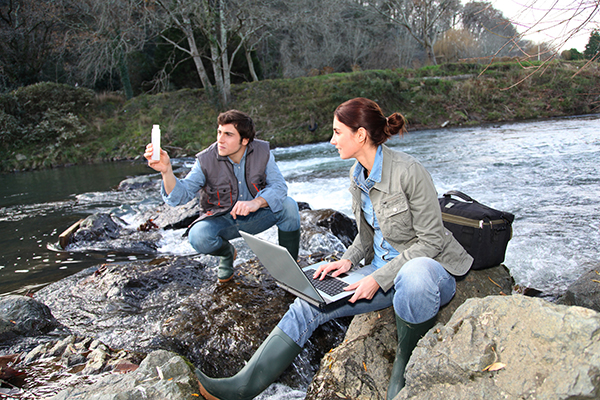
by Kurtz K. Miller Friday, April 25, 2014

Credit: Copyright Shutterstock.com/Goodluz
When I was an undergraduate student, all liberal arts students were required to take a science course as a general education requirement. If I recall correctly, the science options were astronomy, biology, chemistry, physical geology and physics. The astronomy, chemistry and physics classes were highly quantitative, which frightened off many general education students. The alternatives of biology and physical geology tended to be more attractive because their core content was less rooted in high-level mathematics. Thus, the physical geology course was a favorite of athletes seeking to fulfill a general education requirement, and for this reason it was called, as it is at many schools, “Rocks for Jocks.”
Today, after 10 years in science education, I have realized that many other earth science courses at the secondary level and in higher education are also perceived by many to be “easy.” Unfortunately, students are not the only ones who hold these views. School counselors often promote geoscience courses for less academically inclined students who need an “easy” science credit to graduate high school or finish a general education requirement at the college level. Students who do not or cannot pursue college preparatory-level science coursework — in biology, chemistry, physics or advanced placement (AP) courses, for example — are instead tracked into earth science or geoscience classes because the counselors believe these classes will involve less rigorous content or fewer mathematical concepts. Even more regrettably, some earth science teachers reinforce this stereotype by not aligning curricula with core chemistry, mathematics or physics learning objectives.
This perception of geoscience courses — and the related perception of the geosciences as being less scientifically rigorous — needs to change.
The importance of the geosciences cannot be understated. In 2003, Nobel Laureate Richard E. Smalley outlined the top ten problems that humanity will face over the next 50 years. Five of the ten problems — namely, those involving energy, food, water, the environment and population — are directly related to the geosciences. If the geosciences are so incredibly important to our future, why are they not being taught at an advanced level? Part of the problem with the perception of the geosciences stems from poor communication and the lack of public understanding of the geosciences. Geoscientists, geoscience educators and teachers have the ability to improve public communication and knowledge of the geosciences and their importance in society.
What can be done to improve the general reputation of geoscience courses at the secondary and college or university level? First, at the national level, geoscientists and geoscience educators can help raise awareness about and visibility of the societal importance of environmental science and geology. A concerted push for the creation of multiple AP and dual-credit geoscience classes in diverse fields is needed to elevate the subject to the same level as other scientific disciplines. Second, legislators and representatives of state education agencies need to recognize geoscience courses as important prerequisites for future college and university coursework.
Finally, geoscience educators and teachers must work hard to align geoscience curricula with core chemistry, mathematics and physics concepts to demonstrate the seamless integration of the Science, Technology, Engineering and Mathematics (STEM) disciplines. Why can’t geoscience courses be for “rock stars”?
© 2008-2021. All rights reserved. Any copying, redistribution or retransmission of any of the contents of this service without the expressed written permission of the American Geosciences Institute is expressly prohibited. Click here for all copyright requests.